Japanify: Kuri no Kanroni (Chestnuts Simmered in Syrup)
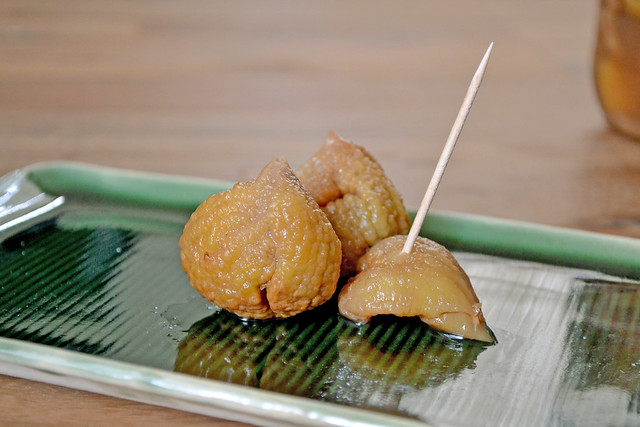
Chestnuts signify the presence of winter in many cultures. Although I've never actually tried chestnuts roasted by an open fire, I have tried the Japanese version of chestnuts simmered in simple syrup, or kuri no kanroni. However, I had never taken the initiative to prepare a chestnut dish because the task of peeling always seemed so daunting.
But this display, staring me in the face as I entered my local market, made me want to take on the challenge.
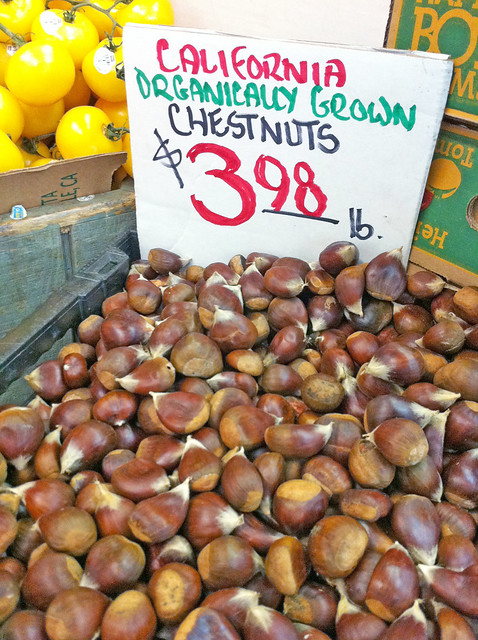
The sheer number of chestnut peeling Youtube videos on the internet gives you some insight into just how problematic these nuts are.
http://youtu.be/00kXTuAi9lU
It would have been nice to have one of those handy tools for the peeling process... But I only had a knife and 10 fingers so I tried this method.
Cut bottom of chestnut with scissors and peel the rest by hand. I also found it helpful to shimmy one of the scissor points between the nut and shell and gently cracking it open.

Cut


Peel
To get rid of the inner skin, bake in a 400˚F degree oven for 10 minutes.
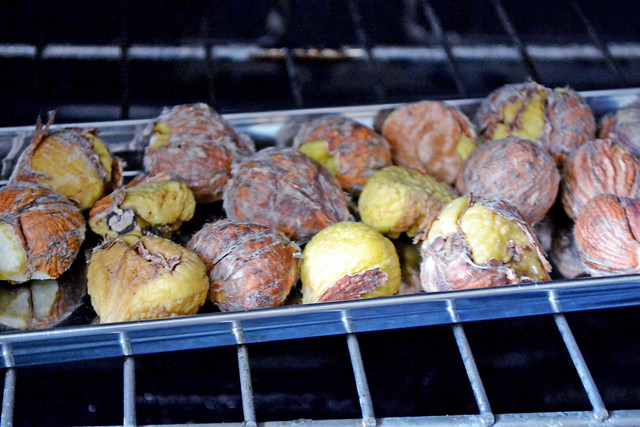
This out layer will be easy to remove after it's dried out and crackly.
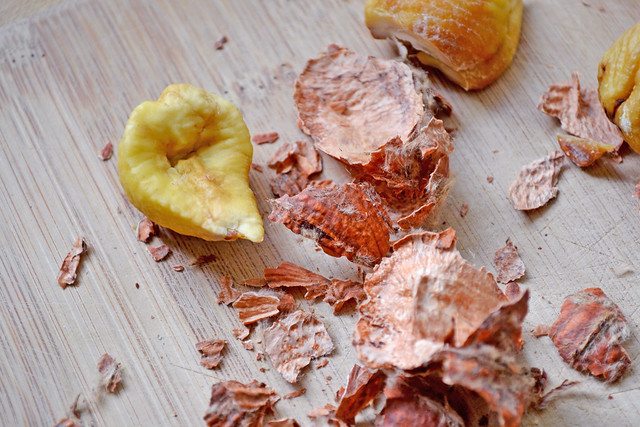
Kuri no kanroni is considered a special treat in Japan. The chestnuts are simmered in simple syrup and have a beautiful deep yellow-mustard color to them. The chestnuts are also chiseled in a way that none of the brain-like crevices of the chestnut remains. Mine, on the contrary, are au naturel as I did not chisel them down. They also don't have a uniform color to them because I did not pare them down.
Kuri no kanroni are most often served alone or in red bean paste desserts. Considering the labor that goes into peeling and simmering a whole chestnut, in tact, I now understand why these are so expensive.
Chestnuts are part of Japanese New Year festivities, most commonly as kuri kinton or mashed sweet potato with chestnuts. I am invited to a New Years Dinner this year and am very excited to bring a chestnut dish as my festive contribution.
Kuri no kanroni (Chestnuts Simmered in Syrup)
INGREDIENTS
1/2 lb peeled raw chesnuts
10 tbs of sugar
Water
METHOD
1. Peel the chestnuts. (This will no doubt be the hardest task).
2. Put chestnuts in a saucepan and cover with water.

Bring to a boil, then decrease to low heat. Simmer for 20 minutes.
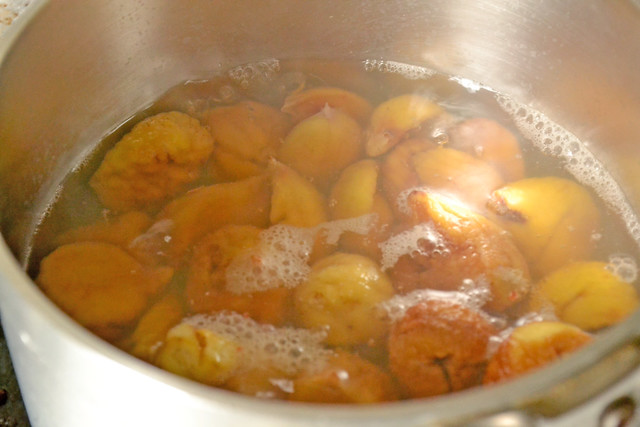
3. Raise chestnuts in a collander and rinse with cold water.

4. In the saucepan, add 1.5 cups of water and 5 tablespoons of sugar.

5. Melt the sugar on med-hi. When the sugar dissolves, add the chestnuts. Bring to a boil, then turn the heat off.

6. Cover with a paper towel or cheesecloth and leave for at least 5 hours.

7. After at least 5 hours remove the cheesecloth and add 5 more tablespoons of sugar. Bring to a boil, then turn heat off immediately. Mix so that the sugar dissolves while being careful not to smush chestnuts.

8. Wait for at least 5 more hours.
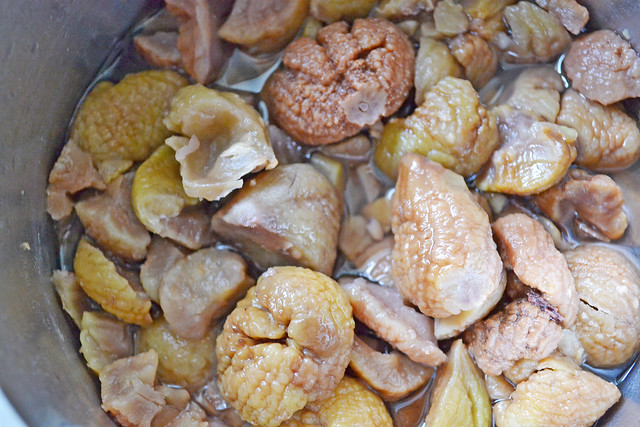
9. Preserve in jars.
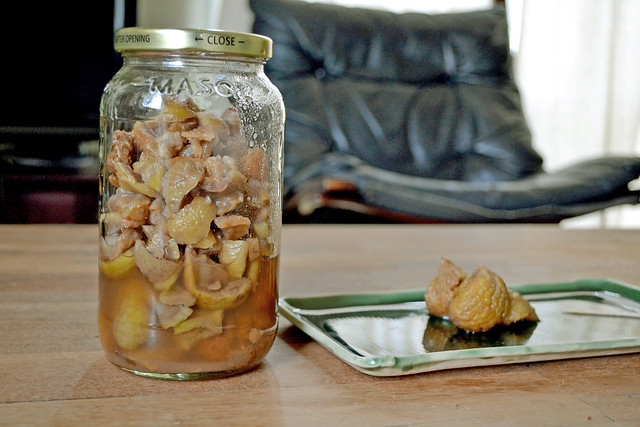
These chestnuts will have the texture of a dense sweet potato. Because the only ingredient enhancing its flavor is sugar, kuri no kanroni is a very good dish to showcase the unique flavor of chestnuts which seem to curiously possess an expansive sweet and savoriness to them that makes me nostalgic for some reason. The Japanese word to describe the taste would be yasashii (gentle/kind).
Mine did not come out looking much like professional kuri no kanroni, instead the look (golden brown) and feel of them (firm but moist) was much closer to those zip-packs called Muki kuri that are sold at convenient stores and grocery stores throughout Japan. I can still imagine using these for Japanese sweets cooking though. I will try submerging these in my mizu yokan.

Full of fiber and protein these are great for taking along for a picnic. Or make the squirrels jealous as you pop them in your mouth while hiking.
Akemashite omedetougozaimasu! (Happy new year!)
